Abstract
The effects of nonsaline polyethylene glycol (PEG)-6000 and saline seawater solutions of comparable osmotic potential on the concentrations of organic solutes and inorganic ions in the tissues of halophytes (Plantago maritima L., Triglochin maritima L., Limonium vulgare Mill., Halimione portulacoides (L.) Aell) have been investigated. Studies were made to determine whether high salinities induce specific ion effects that are absent in plants grown in nonsaline solutions of comparable osmotic potential. Over-all, the responses of each species to the two different treatments (seawater or PEG) are similar; the accumulation of organic solutes (compatible osmotica) in tissues is primarily correlated with a decrease in the osmotic potential of culture solutions. Depending on the species, sorbitol, proline, reducing sugars, quaternary ammonium compounds, and α-amino nitrogen accumulate in tissues as the water potential of the tissues falls. Within a species there are differences in the concentrations of inorganic ions and organic solutes between roots and shoots of plants grown at high salinities or at high concentrations of PEG.
Full text
PDF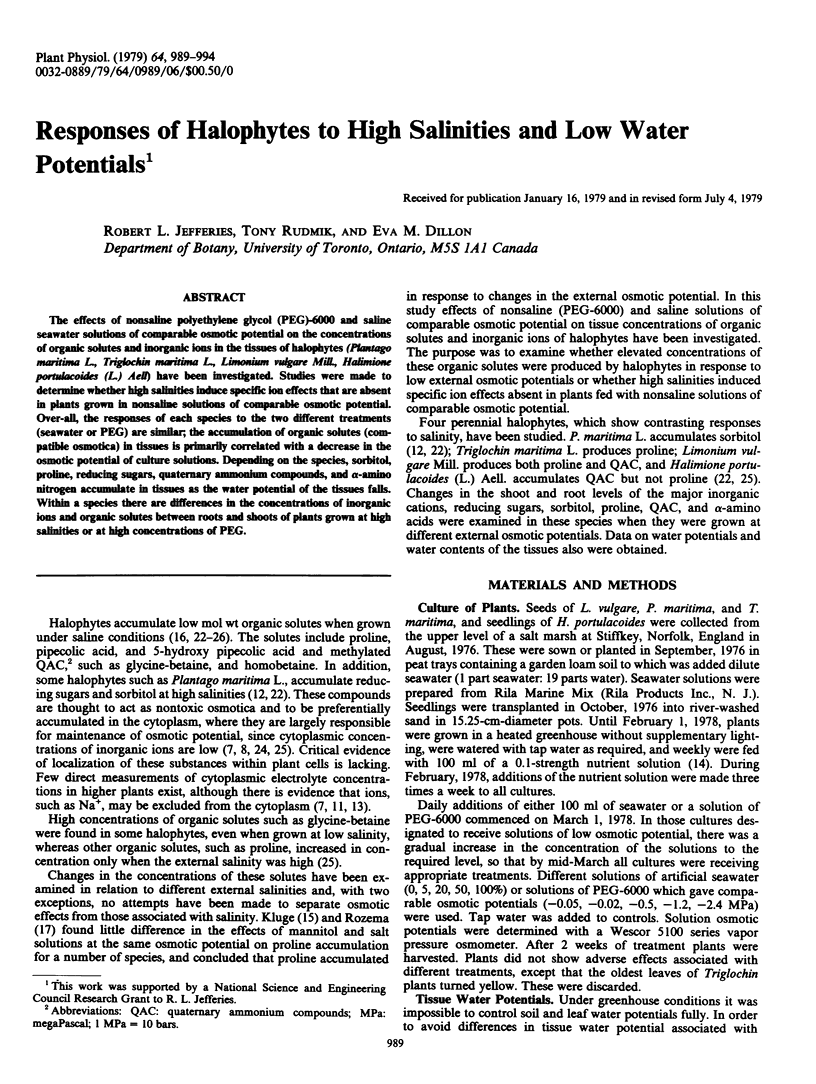
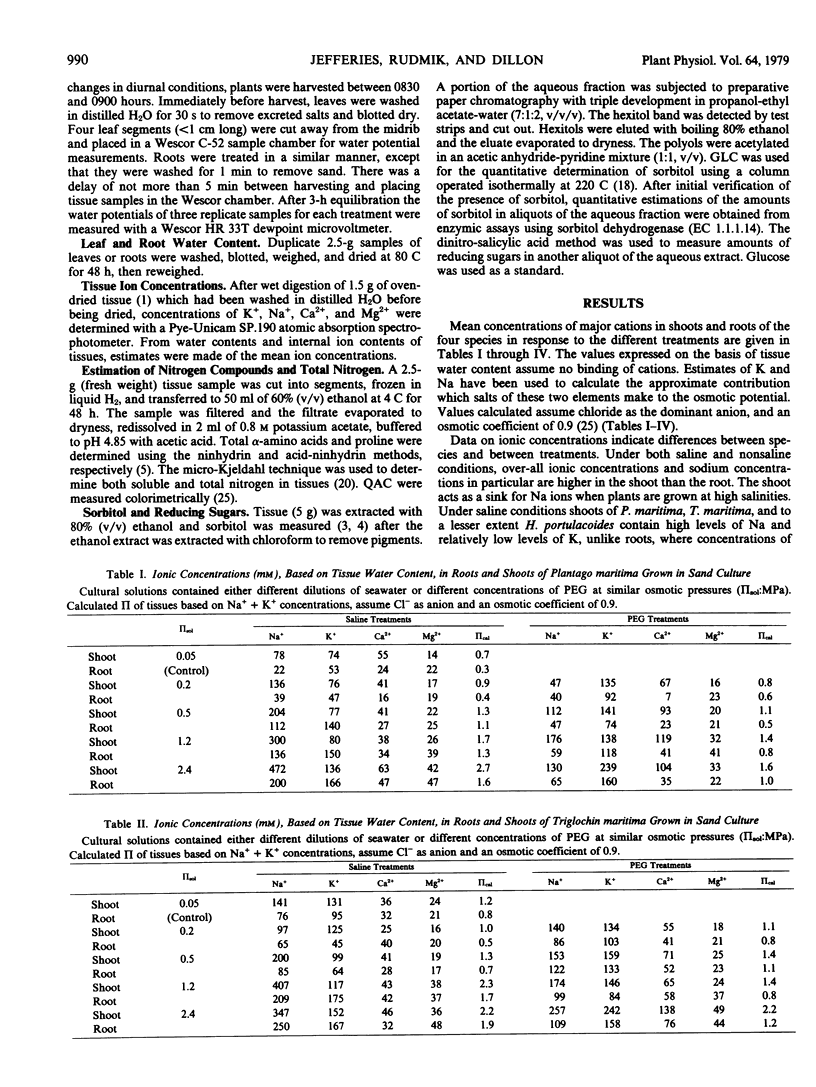
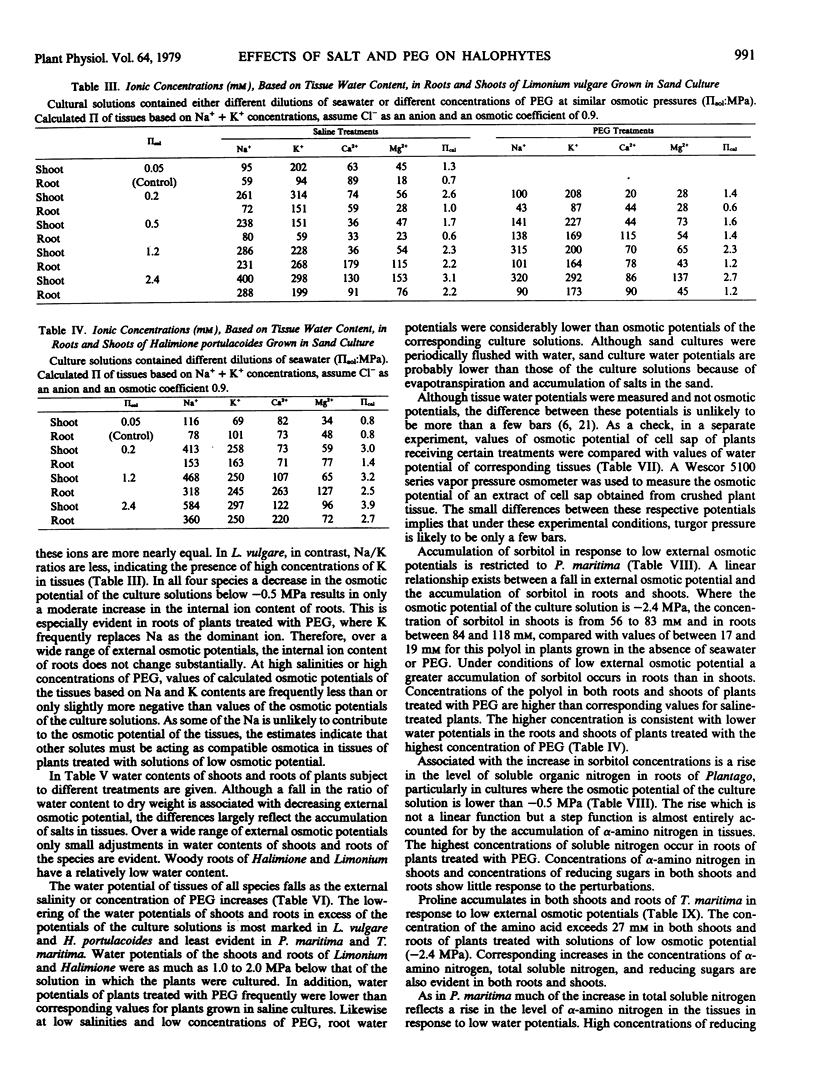
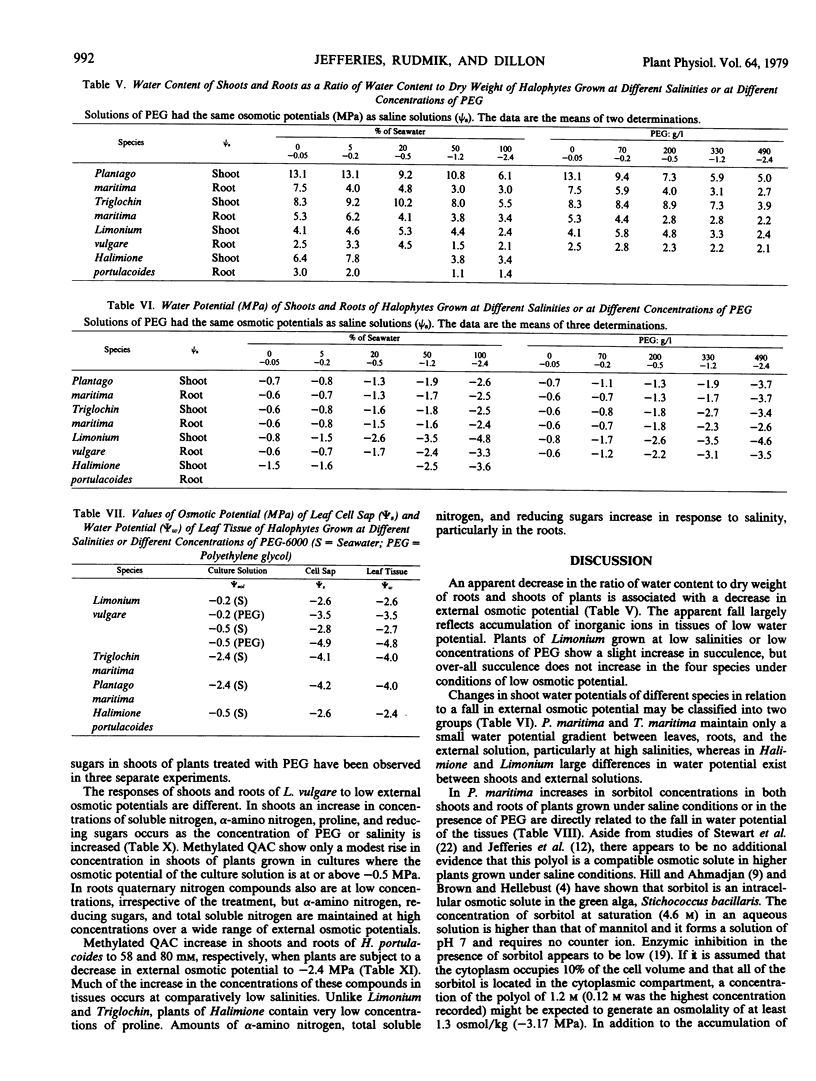
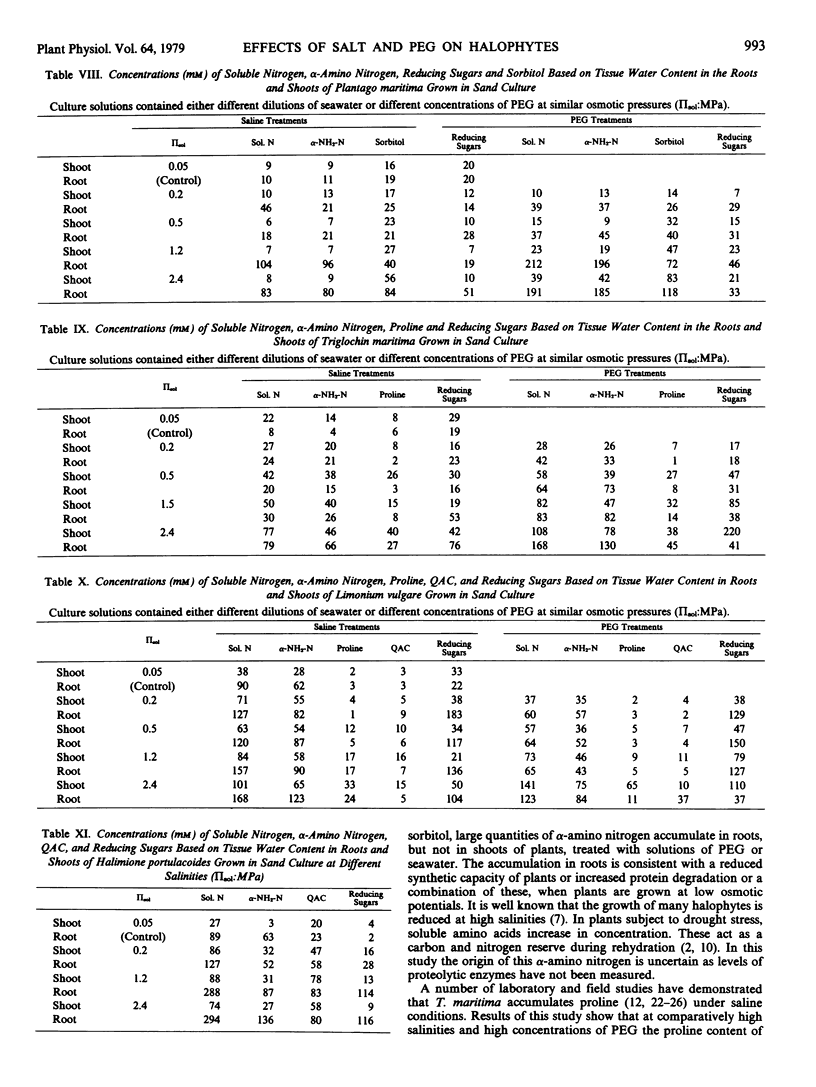
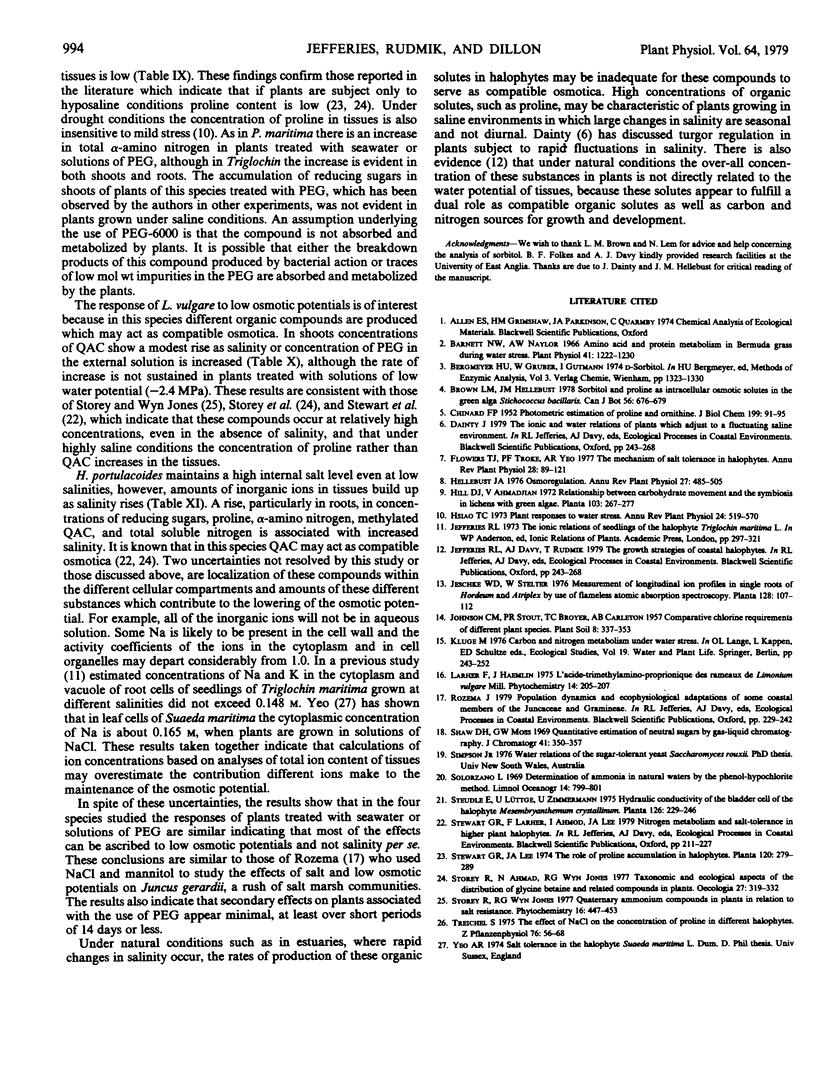
Selected References
These references are in PubMed. This may not be the complete list of references from this article.
- Barnett N. M., Naylor A. W. Amino Acid and protein metabolism in bermuda grass during water stress. Plant Physiol. 1966 Sep;41(7):1222–1230. doi: 10.1104/pp.41.7.1222. [DOI] [PMC free article] [PubMed] [Google Scholar]
- CHINARD F. P. Photometric estimation of proline and ornithine. J Biol Chem. 1952 Nov;199(1):91–95. [PubMed] [Google Scholar]


